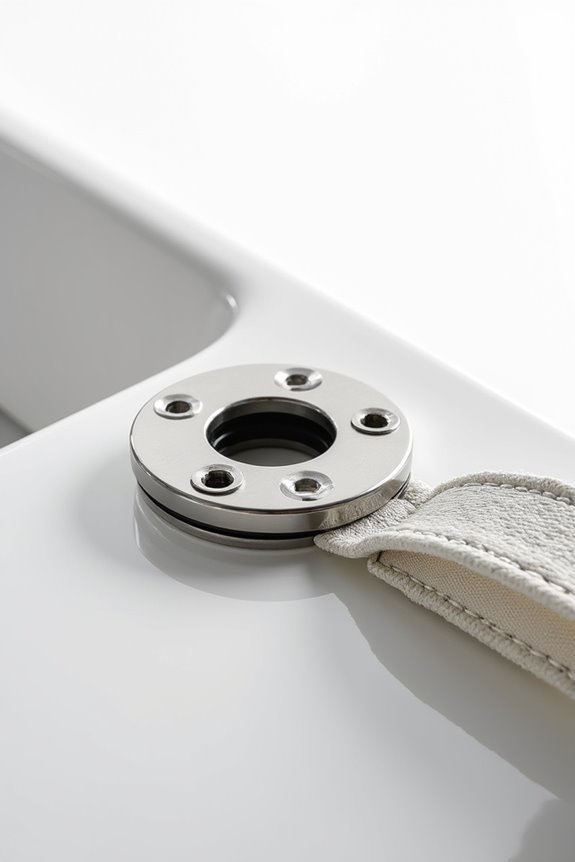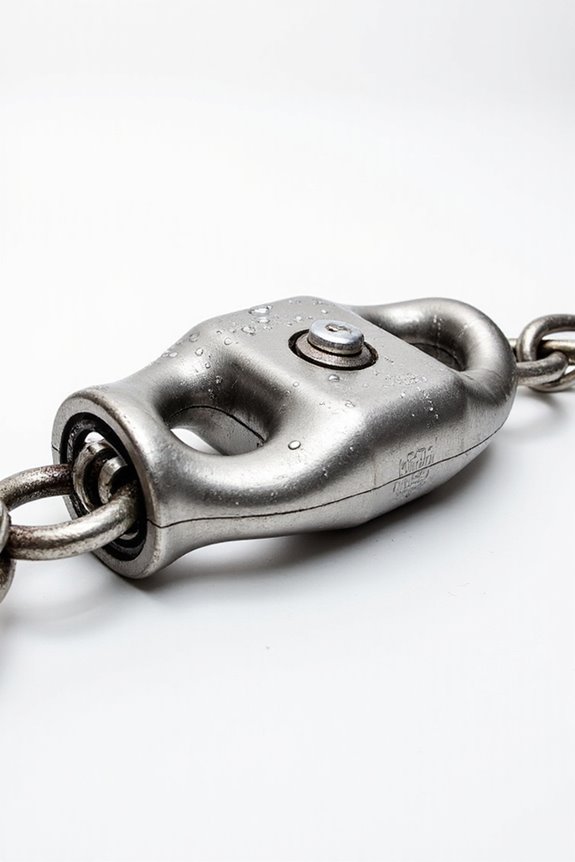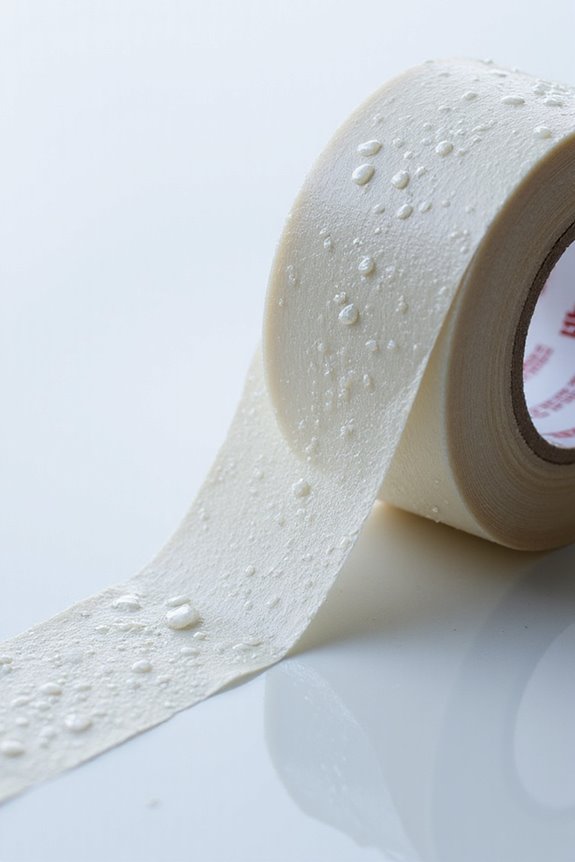When we talk about eyes on boats—those solid rings attached at the bow or stern—they’re your go-to spots for towing, anchoring, or tying up. They need to be mounted on strong parts of the hull, often with stainless steel bolts and backing plates, to handle serious stress. Placing bow eyes near the waterline improves anchor holding and reduces rode length—pretty clever, right? Choosing the right material also matters, balancing strength and corrosion resistance. Want to grasp how these little loops make a big difference? Keep exploring.
Key Takeaways
- Eyes attachment points like bow and stern eyes are metal loops used for towing, anchoring, and securing boats safely and reliably.
- Properly installing eyes involves selecting strong structural areas, accurate drilling, and using marine-grade bolts with backing plates for load distribution.
- Positioning bow eyes near the waterline improves anchoring efficiency by reducing rode length and optimizing pull angles.
- Materials such as 316 stainless steel or nylon are chosen based on corrosion resistance, strength, and environmental conditions.
- Safety requires secure mounting, marine-grade hardware, sealing against leaks, load testing, and regular inspections for durability.
Definition and Purpose of Bow Eyes
Let’s talk about bow eyes—not the kind you’re thinking of! In boating, a bow eye is that sturdy metal or plastic loop firmly attached at the very front of a boat. It’s not just decoration; the bow eye construction is carefully designed to provide a tough, reliable spot to connect ropes for towing, anchoring, or securing the boat. Ever wonder why your boat stays put or tows smoothly? That’s bow eye functionality at work. These fittings come in various shapes and sizes, made from materials like stainless steel or nylon to resist corrosion and handle heavy loads. So, when you tie up or tow your boat, you’re really relying on a small but mighty piece of hardware that keeps everything safe and sound. Makes sense, right?
Proper Installation Techniques for Bow Eyes
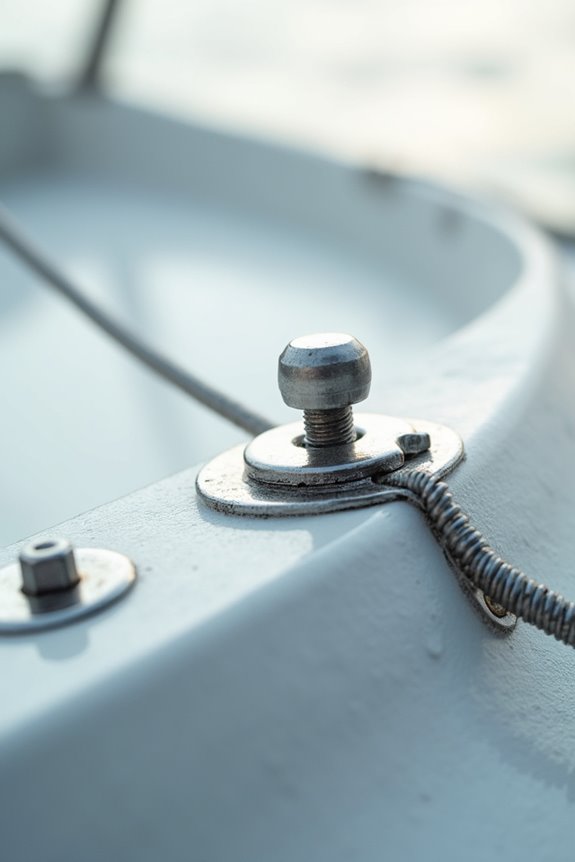
Installing a bow eye might seem straightforward, but getting it right takes some careful planning and know-how. When we talk about bow eye installation, choosing the perfect spot on the bow’s centerline is essential—it keeps towing forces balanced and prevents unwanted stress. We always attach the bow eye to solid structural parts, never just the deck, to guarantee good load distribution. For wooden boats, embedding the eye with epoxy mixed with thick fillers helps spread the load evenly and keeps water out. Don’t forget accurate measuring and drilling—missteps here can lead to a crooked, weak setup. Using the right bolts with backing plates further protects the bow from strain. It’s a team effort between proper materials and precise technique, making sure our boat’s ready for its next adventure without a hitch.
Advantages of Positioning Bow Eyes Near the Waterline
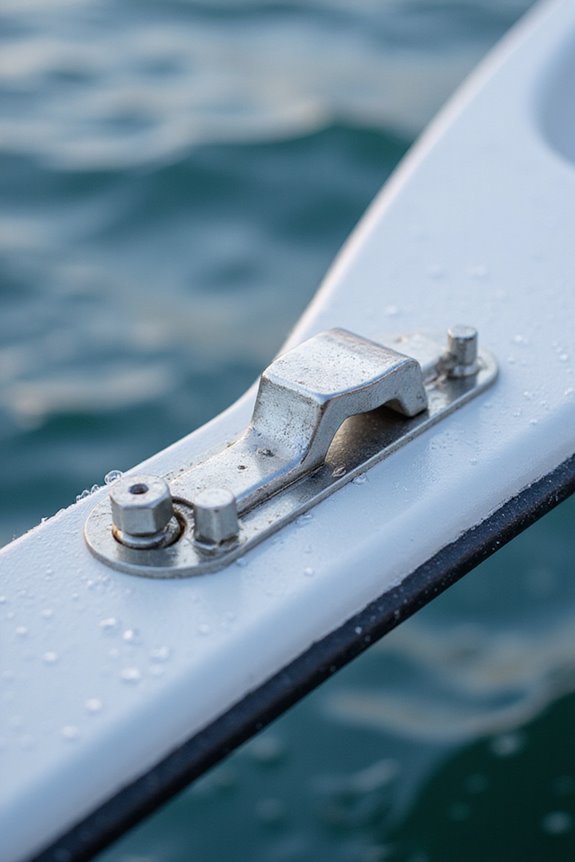
While it might seem like a small detail, positioning bow eyes near the waterline can make a surprisingly big difference in how our boat behaves at anchor. With proper bow eye placement, the rode length needed to reach ideal pull angles drops dramatically—sometimes cutting our anchor rode in half. Isn’t that handy? Less rode means less chain swinging around, which is a lifesaver in crowded anchorages where space is tight. Plus, the lower pull angle improves anchor holding power, helping us stay put when wind or current change. And don’t forget shock absorption—a waterline bow eye makes adding snubbers easier, easing tension on our gear and saving wear and tear. So, bow eye placement near the waterline isn’t just smart; it’s a classy anchoring upgrade we all can appreciate.
Material Options for Bow and Stern Eyes
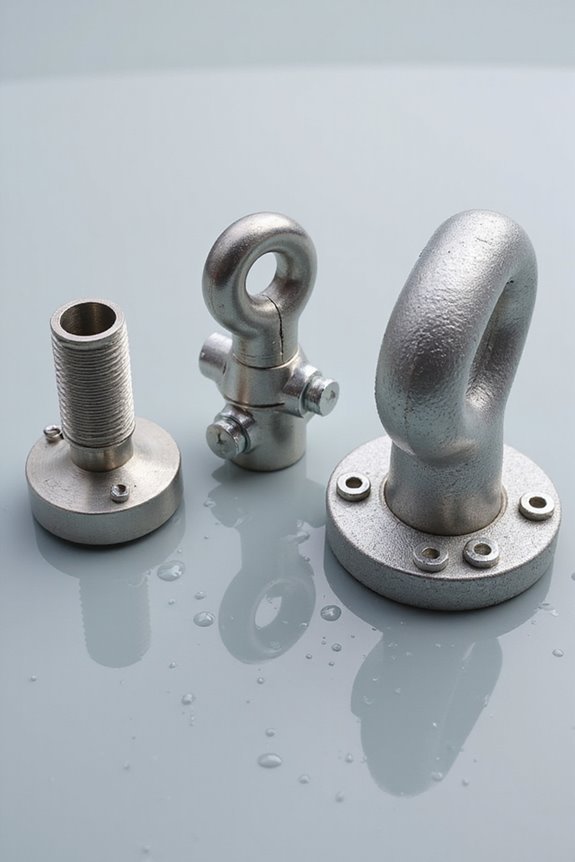
After getting the hang of how bow eye placement near the waterline can improve our anchoring game, it’s time to think about what these eyes are actually made of. Material selection is key—not all metals handle our salty sea playground the same way. Stainless steel, especially 316 grade, is a favorite because of its excellent corrosion resistance and strength—a real workhorse for heavy loads. Galvanized steel offers a budget-friendly option but can rust over time, so it’s better for freshwater outings. Then we have nylon, which is lightweight and corrosion-proof but better suited for smaller boats. Bronze gives a classic vibe with good durability, while chrome-plated bronze adds extra shine and protection. Choosing the right material means matching your boat’s needs and environment, so you don’t end up with a rusty surprise when you least expect it.
Role and Benefits of Stern Eyes in Boat Handling
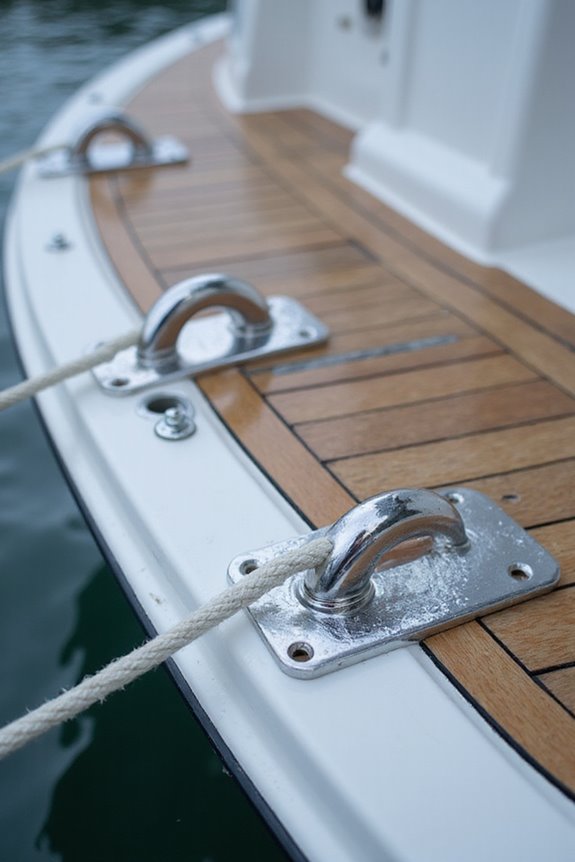
When it comes to keeping our boats safe and steady, stern eyes play a surprisingly big role. These handy fixtures, attached at the transom, offer key stern eye benefits by providing balanced, reliable points for securing and towing our vessels. Think of them as the unsung heroes that help prevent our boats from breaking loose—crucial for towing safety and peace of mind. They guarantee forces are evenly spread, maintaining structural integrity during transport or mooring. Plus, installing stern eyes made of durable materials like stainless steel means they resist corrosion, sticking with us through many seasons. We all want to feel confident our boats won’t go anywhere without us, right? So, embracing stern eyes in boat handling is a smart move that keeps us connected, secure, and ready for the next adventure.
Understanding Eye Splices and Their Applications
Since every good boat deserves a strong and reliable tie-off point, understanding eye splices is a key skill for us boating enthusiasts. Eye splices create a permanent loop by weaving the rope’s tail back into itself, maintaining about 90-95% of the rope’s original strength—pretty impressive, right? Mastering eye splice techniques means we get neat, secure loops perfect for halyards, dock lines, or anchor rodes without relying on knots that can weaken our lines. Depending on the rope, like double braid or Dyneema, we adjust our tucks—usually five to seven—to maximize splice strength. Plus, doing it ourselves saves cash and gives our setup that professional feel. So, next time you tie off, consider splicing—your boat, and your pride, will thank you!
Differences Between Covered Eyes and Hard Eyes
Although both covered eyes and hard eyes serve as essential attachment points on our boats, they play pretty different roles depending on what we need them for. Covered eyes are soft, lighter rope loops protected by a chafe guard, making them great for tow bridles or lighter loads where hardware isn’t directly involved. Hard eyes, on the other hand, have a sturdy metal thimble inside—a marine-grade stainless steel insert—that keeps the rope from rubbing against hooks or shackles and handles heavy-duty towing or mooring like a champ. Think of covered eyes as your comfy sneakers for easy tasks, while hard eyes are the heavy boots made for rough terrain. Installing hard eyes takes more skill but pays off in durability and strength, something we generally appreciate when the sea gets tough.
Safety Considerations When Installing Eye Attachment Points
Even though eye attachment points might seem like just another bit of hardware, they’re actually critical spots that need our careful attention. We want them securely installed on strong, reinforced parts of the hull—no thin spots where they might pull loose. It’s not just about screwing in bolts; we use marine-grade hardware and sealants to fend off corrosion and leaks. And yes, after installation, load testing is a must—we don’t want surprises when the seas get rough. If you’re clipping on your safety harness, those attachment points need to be rock-solid, spaced right, and easy to reach. Remember, safety isn’t just about gear; it’s about how we put it together. Feeling secure? That’s the goal we’re all sailing toward.
Maintenance Practices for Prolonging Eye Attachment Durability
We’ve talked about getting your eye attachment points installed safely and securely—now let’s keep them in top shape so they don’t give out on you when you least expect it. Regular routine inspection is key: checking for rust, cracks, or looseness can save you from bigger headaches later. Don’t forget corrosion prevention—rinse those metal fittings with freshwater after salty trips and apply marine-grade lubricants to slow oxidation. Spotting a rust patch? Treat it immediately; ignoring it won’t make it disappear. Keeping your boat stored dry or covered also helps protect critical eyes from moisture damage. And hey, tightening screws now and then isn’t just nitpicking—it’s smart maintenance. Staying on top of these habits keeps your equipment reliable, so you and your crew can enjoy boating worry-free.
Frequently Asked Questions
Can Bow Eyes Be Used for Lifting a Boat During Transport?
We can use bow eye usage for lifting during transport if we follow proper lifting techniques, ensuring it’s securely bolted and rated for the load. Together, let’s prioritize safety and trust these attachment points wisely.
How Do Different Hull Materials Affect Eye Attachment Strength?
It is understood that hull flexibility and material durability shape eye attachment strength. Fiberglass bonds well with epoxy due to flexibility, while steel’s rigidity demands precise reinforcement. Together, we guarantee secure, lasting attachments tailored to each hull type’s needs.
What Is the Maximum Load Rating for Typical Stainless Steel Eyes?
Oh, because every stainless steel eye is obviously destined to lift skyscrapers, right? In reality, their maximum load ranges up to about 7,500 lbs for 1-inch sizes, ensuring safe, reliable strength we all can trust together.
Are There Legal Regulations Governing Bow and Stern Eye Installations?
We understand you’re wondering about regulatory compliance for bow and stern eyes. While no federal laws specify installation standards, we all must follow safety guidelines and local rules to guarantee safe, reliable, and legal attachment point setups together.
Can Synthetic Eyes Replace Metal Ones for Saltwater Usage?
Think of synthetic eyes as the saltwater warriors, balancing synthetic durability and defeating eye corrosion with ease. Together, we can choose materials that stand strong, protect our gear, and keep our boating community united against harsh marine elements.

